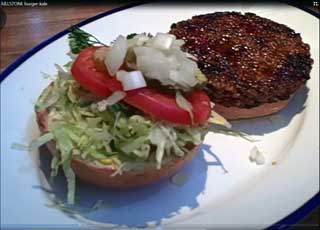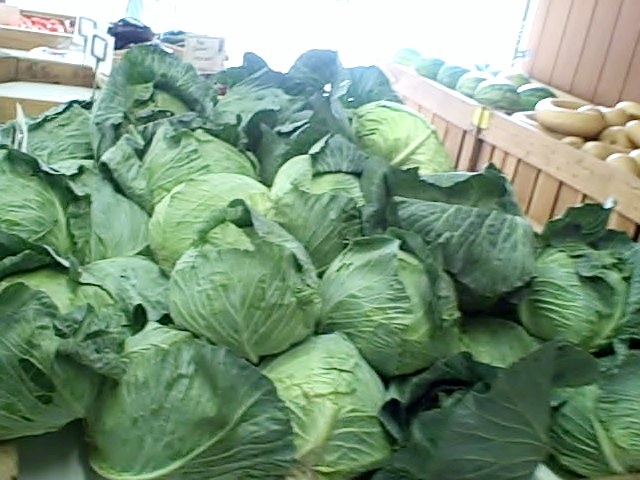CPAC and its Cows Célèbre

Dear CPAC and other meat eaters of any political stripe. Please do not fret. We know hamburgers are your sacred cows. We do not want to pry them from your cold, dead plates. Your right to eat dead animal flesh is safe. Yes, you may take a moment to sigh in relief.
But, please understand this. While sneering at plant-based food is red meat at a CPAC convention, you’re doing your audiences and their children a disservice. There are two reasons for this — one pretty major and the other quite major. I know the very mention of the term “climate change” gets you all antsy and itchy. Maybe you even have to reach for your inhaler. I respect your principled stand. I’ll give you the news in as condensed a form as possible.
The 2006 UN Food and Agricultural Organization (FAO) paper, “Livestock’s Long Shadow,” declared the meat industry is responsible for a hefty 18% of greenhouse gases. And there are environmental scientists who state this figure is too low. They put it at somewhere between 30.4% and 51% depending upon which data is factored in. Oh, and the population is growing.
The UN’s Department of Economics and Social Affairs (DESA), stated in its report, “World Population Prospects: 2017 Revision” the world population “is projected to increase by slightly more than one billion people over the next 13 years, reaching 8.6 billion in 2030, and to increase further to 9.8 billion in 2050 and 11.2 billion by 2100.”
Better fire up that grill. Company’s coming.
It would be neighborly to welcome the newcomers with a good hot meal — or any food. Unfortunately, this can’t happen if we persist in enabling the resource-intensive, meat-centric diet. it seems that a good deal of the world’s agriculture is devoted to growing grains for the purpose of feeding livestock. Apparently, this is inefficient. The amount of grain required to feed cows and the other animals does not give a good nutritional return on investment.
What we have here is a genuine, bona fide, existential crisis. We are speeding toward the cliff and we have no brakes.
The other major factor is the subtle but significant replacement of “animal welfare” by “animal rights.” The former, a goodhearted concept, relies on the belief in human superiority over other animals. Yes, we are in charge, it assumes; but we must be benevolent rulers.
In 1973 Peter Singer argued, first in an essay and then in his 1975 book Animal Liberation, “If we ignore or discount [animal] interests, simply on the grounds that they are not members of our species, the logic of our position is similar to that of the most blatant racists or sexists who think that those who belong to their race or sex have superior moral status, simply in virtue of their race or sex, and irrespective of other characteristics or qualities.”
Seeing that other animals are fellow creatures, can think and feel, and are entitled to control their own lives can be ignored but not really forgotten — at least, by anyone with a soupçon of empathy.
Should we continue to go on slaughtering millions of animals, while land that could be feeding our new human neighbors is wasted; while using our resources to enable tsunamis, floods, wildfires, tornadoes, horrific storms? Come on! Do I really have to mention the poor shivering polar ice caps?
Pat Brown, CEO/founder of Impossible Foods, said “the cow was just a technology to turn plants into something you want to eat.”
The good news is that now other technologies are in town.
Right now, start-ups and established brands, entrepreneurs and academics around the world are looking for the magic formulas that will feed the world without benefit of livestock. They are investigating both plant-based and lab engineered “meat,” “dairy,” and “seafood.”
Their energies and their smarts are giving us three platforms.
Plant-based analog “meats” have the approximate look and feel, texture and taste of the “real thing.” Soy, wheat, beans, nuts, and/or other varieties of produce are shaped into facsimiles of the “original inspiration.” These include fake bacon, ersatz sausages, non-chicke nuggets and, of course, the many varieties of veggie burger —ranging from the venerable Quorn, and Morning Star Farms patties to the modern darlings, Impossible Burger and Beyond Beef.
The burger pictured above is the vegeburger served by the Hllstone chain.
Recently introduced are Ocean Hugger’s tomato-based sushi ; Indian startup’s Good Dot, a plant-based mutton, made of soy, wheat, and pea proteins; and “tuna” from Good Catch. (The Good Catch slogan is “plant made. chef mastered.”)
What can I say? Some of us prefer genuine imitation bacon to cardiac arrest or pigicide.
There’s a certain quickening of the pulse when talking about investing in lentil futures.
Add to this all the established omnivoric
mega-marketer brands that have products that happen to be vegetarian or
vegan and/or are introducing products to appeal to the growing vegophile
market.
As Humphrey Bogart might have said, “We’ll always have tofu.”
In keeping with the new sensibility, we have 21st century artisanal tofu from Hodo. The Oakland (CA) firm offers “buttery smooth tofu blocks,” as well as flavored nuggets (e.g. Sichuan Mapo Tofu).
A second platform consists of the flat-out blatantly plant-based fare that tips its hat to widening culinary horizons and expanded definitions of the basics. This includes the veganizing approach. It isn’t the beef that makes stroganoff stroganoff. It’s all the other stuff that goes into the pot.
“The Vegan Roadie” Dustin Harder says, “People have figured it out. You can have whatever your craving is. You could find a more healthful [vegan] version of it that fits into your diet and lifestyle.”
The third platform might be called “test tube meat” or “In vitro meat” although it goes by the more genteel descriptor “cultured meat.” As its names suggest, this stuff comes to us from nurtured stem cells.it isn’t slaughtered. It’s brewed.
Mosa Meat, a Maastricht Netherlands based
company, introduced its the first lab-grown burger at a London press
conference on 5 August 2013. Its estimated cost was $325,000. (And
that’s without the truffles.)
Mosa is not alone in its quest.
Cardiologist Uma Valeti, cofounder of Memphis Meats, told Mary Allen of the Good Food Institute, the idea of cultured meat first intrigued him when he was “involved in a study using stem cells to repair heart muscle tissue damaged by large heart attacks.” He realized “if stem cells could be used to regrow heart muscle tissue, they should be able to be used to grow animal muscle tissue – aka meat.”
Here’s a peek at a few of the other players.
Israeli start-up Aleph Farms states that it’s “3D” technology enables it to brew not only muscle tissue but “the fat, the blood vessels, and the connective tissue, such as collagen, that binds it.” Aleph says it will be coming to market in two years. Finless Foods, a San Francisco firm is diving into the competition with its cruelty free bluefin tuna. Perhaps their cultured cells come from Charlie the Tuna who, after all, has good taste.
These wonderful foods already in or poised to enter the marketplace represent a new chapter in dining. They are not substitutes. They are alternatives. Some offer the comfort of familiar taste, texture, and mouth feel. Others bring the flavors of the world to our kitchens.
There still will be meat around. It just won’t be that special.
Meanwhile, dear CPAC members (and other confirmed meat eaters), you needn’t grab your pitchforks just yet to protect your right to eat cows. While you’ve been busy scoffing, sneering, and smirking, the vegetarian tipping point has already been reached. Plant-based eats are becoming the world’s standard. The rest of us will be enjoying the world’s bounty (a delicious way to save the planet), saving some thinking, feeling, animals from being murdered, and freeing up land to feed the world’s growing population.
If we're lucky, we will have a Green New Deal. It won’t be that much of a brave new world. Some meat will still be available.
Meat has been associated with certain traditions, holidays, events, and occasions. And that is fine. These various joyful celebrations will continue. Certainly food will still be tied intrinsically to the festivities. It’s just that the meat part won’t necessarily be coming from a dead animal.
You want fries with that?
